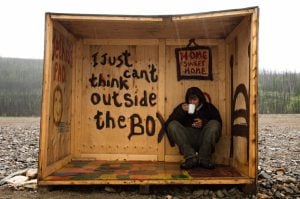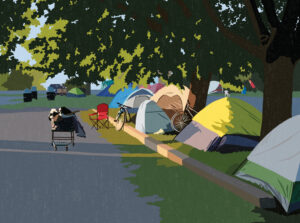
People & Culture
Kahkiihtwaam ee-pee-kiiweehtataahk: Bringing it back home again
The story of how a critically endangered Indigenous language can be saved
- 6310 words
- 26 minutes
This article is over 5 years old and may contain outdated information.
People & Culture

In 1898, 30,000 gold stampeders from around the world landed on the Alaska Pacific coast, hiked over the nearby Chilkoot and White Passes into Canada and raced down the Yukon River. Their quest: Klondike gold reportedly lying thick just below the surface within easy reach of a shovel. Ever since I read the kid’s version of Pierre Berton’s book, Klondike, 50 years ago, I’ve been gripped by this story.
So this summer I’m retracing the Klondike gold rush route by hiking and paddling 1,500 km through some of North America’s most rugged territory — alone. Solo! It’s a pretty unusual way to celebrate turning 60.
Rapids, whirlpools, glacial fast water and extreme wilderness conditions all combine to make this trip a challenging adventure trek. Increasing the excitement, the entire trip will take place in grizzly territory.
There are tons of reasons to come here. Here are my top three:
• Photograph Klondike gold rush relics and ruins.
• Shoot a story-telling documentary video (a virtual guided tour down the gold rush route telling vivid story-pictures that bring alive historic characters and ghost-towns).
• Thoughtfully and responsibly explore the physical and emotional boundaries that a reasonably fit senior can attain.
Along the way I’ll hike parts of the Chilkoot and White passes, camp in Klondike ghost towns, explore a paddle-wheeler graveyard, pan for gold and take part in an archaeological “dig” for prehistoric mammoth bones.
Eight weeks is a long time to spend alone in the northern wilderness, even for someone who loves the taste of solitude and silence. It’s no place for an inexperienced person, particularly a senior, to travel alone.
Why would I ever want to tackle a solo challenge as daunting as this one?
Partly because I don’t want to “rust” inside. Life is too interesting and challenges abound that lie well within reach. The rocking chair will still be on the front porch in 20 years’ time when I’m 80. But for now, I choose adventure.
Don’t get me wrong. Twenty-first century speed and bustle get the adrenaline pumping. But in my experience too much haste smothers optimism. It chokes the soul. Multi-tasking is great, but it discourages healthy introspection. We forget how to do nothing for a while. And I believe doing nothing is an important skill to own. Now that’s a heretical thought to utter in the 21st century!
Ralph Waldo Emerson once urged people to “adopt the pace of nature.” At least for a season. So before re-entering the fast current of life, I’m going to allow this challenging trip to reset my default settings. Who knows where it’ll take me.
Are you passionate about Canadian geography?
You can support Canadian Geographic in 3 ways:

People & Culture
The story of how a critically endangered Indigenous language can be saved

Travel
An insider’s account of the modern-day gold rush

Places
In Banff National Park, Alberta, as in protected areas across the country, managers find it difficult to balance the desire of people to experience wilderness with an imperative to conserve it

People & Culture
For unhoused residents and those who help them, the pandemic was another wave in a rising tide of challenges